#annabel knight
Explore tagged Tumblr posts
Text
the concept of lenore saving ada after annabel abandons her
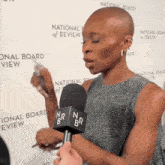
#nevermore webtoon#nevermore ada#nevermore lenore#nevermore annabel lee#nevermore webcomic#nevermore season 2#lenada#fuck it i need to start seeing the positive of this whole situation#delusional#oh and her carrying ada like the knight in shiny armour that she is MY GOD#annabel of course would be fuming
60 notes
·
View notes
Text
small tma/hollow knight art dump
i made a few more designs (maybe i should make a seperate blog for tma/hk crossover au thingy?)
(also i'll possibly design some of the fear entities as higher beings at some point)

so maxwell rayner was originally a regular bug and tried to attain a higher form (kind of like the bugs he's based on who tried to attain pure focus but instead of that he went for pure void)
i guess he succeed?

agnes (my love) i thought of making her a firefly (because fire yknow) but she's specifically the "lightless" flame so i opted for butterfly. she isn't based on any specific ones but rather on the two you can find in hollow knight

annabelle cane (spider wife <3) i obviously didn't finish the bug spider form because i was a bit lazy ngl (i'll do it later) and then her regular bug form is meant to look kind of shy/awkward and harmless. she's based on the deepnest critters and distant villagers

jimmus magnet. i looked at a few dragonflies and just mushed features i thought would look good in the style together. the smaller ones tended to have seperated eyes and little feelers so that's why he has the feelers. if he were to still do the body hopping thing i imagine it would look ridiculous because of his silly eyes.

nikola mannequin-wife orsinov. i'm kind of split o whether i want her to be a regular bug or if she should be a vessel. vessel wluld kind of work with the whole "i stole this voicebox" thing and i also think it would be funny if she were tiny. (i also drew a fully grown version of her as a vessel) i'll elaborate on her more later because i'm too lazy to write right now
#tma#hollow knight#tma spoilers#agnes montague#nikola orsinov#jonah magnus#maxwell rayner#annabelle cane#tma fanart#no witty or other remarks to add to the tags unfortunately#tma/hk crossover
34 notes
·
View notes
Text
Okay yall lemme cook‼️‼️‼️
I really, really like the parallels of ‘she fainted and now I’ll fan her’ here with White Raven:

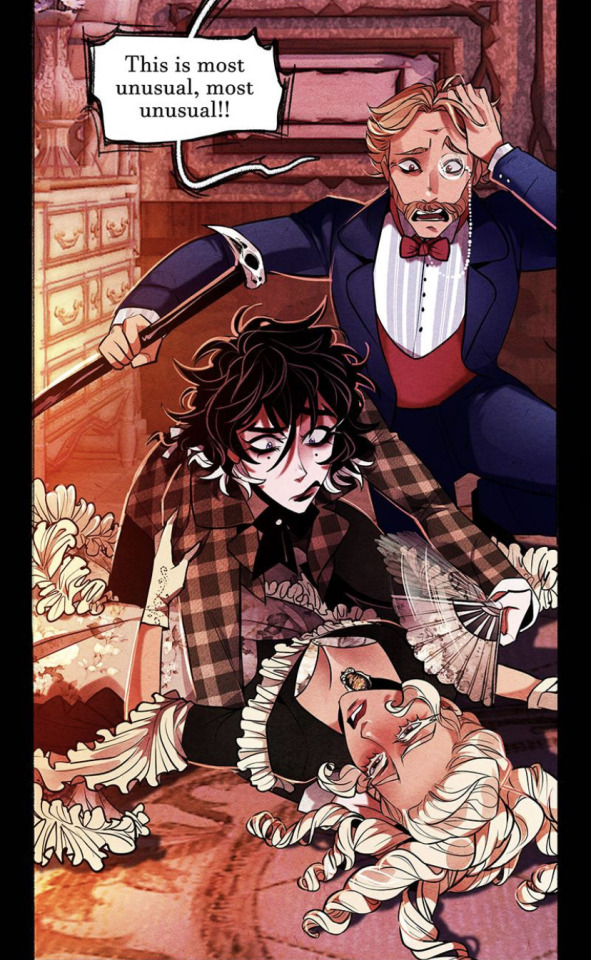
Annabel caught Lenore when she almost fell and tried to remain in this untouched and happy facade while still subtly trying to fan Lenore because Annabel believed her to be upset and needed some air.
Lenore caught Annabel when girlypop straight up fainted and more obviously fans her in an attempt to care for Annabel, her face full of open concern for the fallen woman, there’s even a whole panel that draws attention to the fan specifically.

Why does this even matter, you ask me? Because I love the stark contrasts between Lenore and Annabel, even down to the most minute details they’re opposites.
Annabel is trying to be more discreet in her affections for Lenore, her pretty smile and chipper words a diversion from the way she holds onto Lenore’s arm to steady her, bright eyes a complete distraction from the way her fan is flapping away. Her carefree attitude makes it seem like she could easily play off these attempts to care fer Lenore, like she could flippantly brush it off as ‘nothing big’ and that she ‘doesn’t really care this is just a throwaway whatever action’ (but we all know the calculative Annabel Lee doesn’t just do whatever fer just anyone).
On the complete opposite side of the spectrum, Lenore cares about Annabel. She cares a whole lot, actually, and she’s extremely open about it. From angrily calling Annabel a dratted liar fer claiming what they had to be fake to very clearly worrying about Annabel as she fans her. The delicate care, the way Lenore does not hesitate to grab that fan and start gently fanning Annabel, how she doesn’t try to set up a facade that gives her an ‘out’ if questioned why she’s doing all these things for Annabel. Lenore gives no shit about mindgames and appearances dude!!! Yeah she cares about Annabel, so what??? Lenore is just SOOOO acts of service as a love language, each time she reaches out is open declaration of, “love you love you love you”.
That kinda contrast kills me, man!!! Bright moon x dim sun, the sun does care but she needs to show it in a way where people don’t think she’s that invested you know you know she’s Just A Friend™️, meanwhile the moon says, “fuck it we ballllllll” and snitches her bleeding heart across her entire sleeve right before diving in with affections on full display.
That being said, I also really like how Annabel’s fanning is the last kindness she gave Lenore right before she left and Lenore ‘died’ and by sharp contrast Lenore’s fanning is one of the first kindness she gave Annabel when she came back from the ‘dead’ all resurrected like a funky butch lesbian Jesus.
Kindness as a last resort, as a final parting gift when the time’s up, vs kindness as an instinct, as a greeting call, as your first move.
#bright moon x dim sun SUPREMACYYYY#annabel fucken lee u are n o t nearly as discreet as u think u are i know what u are#meanwhile lenore darling girl keep ot up youre doing so well ypu funky little dashing rogue knight#nevermore webtoon#white raven#annabel lee whitlock#lenore vandernacht
795 notes
·
View notes
Text
Cillian Murphy talking about Tommy and Grace.
Tell us about Tommy’s relationship with Grace
"He meets this girl who works in the pub and she gets to him. You begin to see the chink and the man that we would have known from before the war. It’s a beautifully observed relationship because it happens very, very subtly and slowly - it’s sort of a gradual defrosting between the two of them. It becomes quite intense over the course of the series. He has that fierce drive and ambition, and capacity for violence but also you see the other side of the man and the beauty of it is that he starts falling in love with this girl."
https://www.bbc.co.uk/mediacentre/mediapacks/peakyblinders/cillian-murphy/
"I think the pre-war Tommy used to smile a lot, he laughed a lot, he wanted to work with horses. He was very romantic. And all of these things, you see scratches of them, you know, throughout the show and there's times when he feels like he's getting towards some sort of healing when he's with Grace. And then it's taken away again. And then he retreats back into that kind of shell emotionally."
https://m.youtube.com/watch?si=fAsbq1pRtnkWzM0I&v=ykJJ2nHIX4A&feature=youtu.be
"We meet him at the beginning of season 3 you know he kind of ostensibly has everything that he could wish for you know certainly materially and you would expect emotionally because he now has you know the woman that he loves.and he has a little baby and he has lived in this vast vast mansion."
"Grace and the kid represent kind of the purity in his life you know really and then over the course of the season she gets stolen away from him and then right the end the kid gets stolen away from them and so they kind of everything that's pure in his life seems to be under trait throughout the course of this seríes."
" it's heartbroken,. she's such a fantastic character and you know such a great time working with Annabelle on the show and you know she in one and two she kind of altered to Tommy I think that light side of Tommy that he left behind in the trenches and in France um was kind of reignited by her and I love the duality of the character because she is in one hand a secret agent and then the other hand you know a loving wife and she's a strong strong lady , Steven write such strong women so yeah it's a bit of a shocker to read it."
https://m.youtube.com/live/oVC7pRfoyxE?si=ua154aB4GPLa0IN3
Cillian Murphy agrees that Tommy Shelby was, and still is, beholden to the women in his life. “All the good stuff in Tommy comes, through his mother, from the Romany side. Polly’s the one he trusts most. And he loves his sister, Ada, even though he’s frustrated by her politics. His romantic relations are less straightforward.”
That puts it mildly. In series one and two, Tommy swung between Irish secret agent Grace Burgess and horse-loving aristocrat May Carleton. No sooner did he marry Grace at the beginning of series three than she was murdered. Since then, he’s had a go at orgies and erotic asphyxiation with Tatiana, a double-crossing White Russian, and enjoyed regular hook-ups with his brother John’s ex-fiancée, Lizzie Stark.
Murphy takes a deep breath. “Right,” he says, “during the time Tommy was married to Grace he was completely faithful. Prior to that, sex was basically a way of self-medicating, then Grace’s death spun him off into something else entirely. I think that as we meet him now, he’s probably shut down again emotionally, and sex is just a physical need that has to be met.”
https://www.radiotimes.com/tv/drama/peaky-blinders-series-4-women/
And also Steven Knight.
It shut him down emotionally?
"During really horrific war situations, human beings change very quickly. Some part of the subconscious decides ‘If you’re going to survive, you’ve got to be like this’ so that’s who you become – hard and brutal and all of those things that happen to soldiers. When Tommy got back, he couldn’t stop that. He was frozen inside, like a lot of people who’ve suffered the trauma of war.
Tommy was locked up and frozen inside for a long time. Then he met Grace and she changed things, she unlocked the doors a bit. Then as soon as that happens, it gets closed down again because she gets killed.
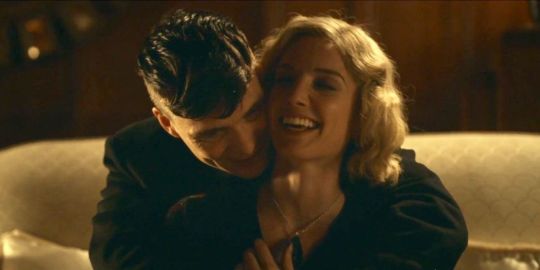
What I keep doing with these characters is offering them a road to happiness and then blowing the bridge up and not letting them go down it. Polly too, would have been happy perhaps with Aberama, but then he’s taken away from her as well."

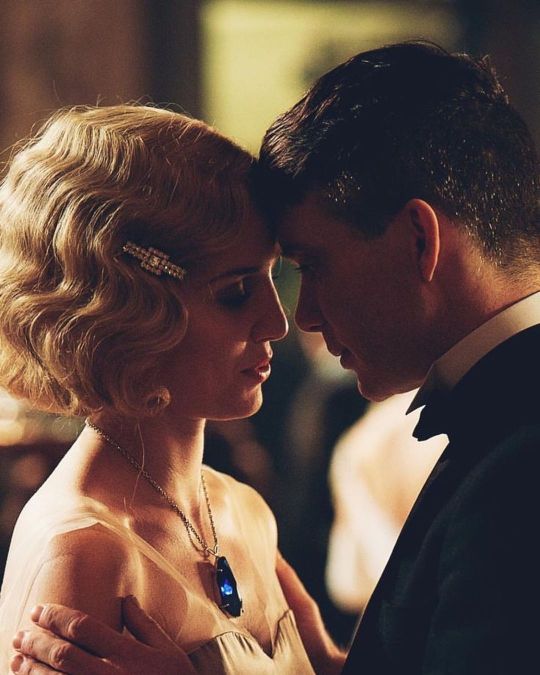
Is there special significance to Grace’s name?


"Yes. She was exactly that, the old Puritan Christian concept of grace – whether you’re good or not, sometimes somebody comes to you and saves you, even if you don’t deserve it. The idea of an unearned saviour coming to save you is exactly what Grace was, and Tommy sort of didn’t deserve it. Then she was taken away so he was thrown back."

https://peakyblinders.tv/exclusive/steven-knight-on-tommy-shelby/
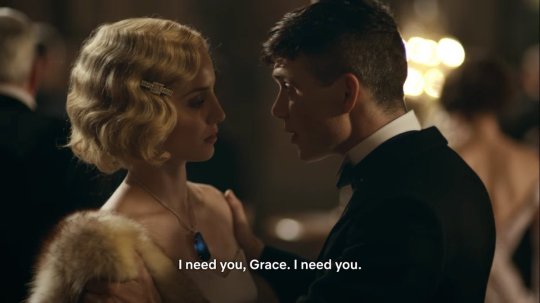
#tommy x grace#tommy shelby#grace shelby#peaky blinders#grace burgess#cillian murphy#annabelle wallis#thomas shelby#tommy x grace forever#tommy and grace#steven knight
36 notes
·
View notes
Text








Women in comics Week 2: Women-led projects
Fearless Defenders (2013) written by Cullen Bunn art by William Sliney colors by Veronica Gandini
#misty knight#brunnhilde#cewomen25#marveledit#comicedit#s: fearless defenders#*original#now THIS is a series.#they just don't make wild crossover series about women in sexy outfits like they used to#it's mostly a valkyrie/misty knight team up book where they have their non fighter archaeologist buddy coming along with them#there are technically 9 shieldmaidens but one of them doesn't show up until the last issue.#one issue of this takes place in asgard and stephanie hans is the artist of that issue (it has my girl clea in it)#but like. the rest of the time the art looks like this??? which is just very different???#tonally all over the place. there's an issue where all of their partners/exes get together and complain about them#and it feels like a really weird and dated version of feminism?#annabelle riggs. sorry dr. annabelle riggs. kisses three different women on panel in a 13 issue series#(one of them technically kisses her. it's her ex.)#the villain is uhhhh doctor doom's secret lovechild with morgan le fay#it has marvel's wonder woman knockoff in it#it's kind of a mess but it's MY mess <3
24 notes
·
View notes
Text

"Monsters must be people too, so oh geez!"
#annabelle cane#the magnus archives#tma#lyrics from Yes To Err Is Human So Don't Be One#The song doesn't necessarily line up with her character but. that one lyric.#idk how to say this but like the whole thing about her understanding that she is being manipulated and used by the Mother of Puppets#And choosing to participate without resistance because she knows that she'll end up the part of a greater plan anyways#and she might as well be a knight and not a pawn#Her embracing her role as a puppeteer being puppeted and deciding that she'd rather be a monster then be dead?? Her speech about free will?#“Let it never be said that I do not dance the steps I am assigned” AHHHHHH#If I'm mischaracterizing her or smth dm me please because I genuinely want to understand her so much!!!#I also found the very shitty bookbinding I did of all her episodes and I'm definitely redoing it#<3#oftheheart
306 notes
·
View notes
Text




i love these two stunning baddies mwah <3
#imagine not being obsessed with them though#the day when the fandom gets normal about them is the day i'd know peace btw#i need to find blogs that are completely rational about both of them without pitting them against each other like sports teams lol#lizzie shelby#lizzie stark#grace shelby#grace burgess#peaky blinders#tv#steven knight#annabelle wallis#natasha o'keeffe#text post
32 notes
·
View notes
Text

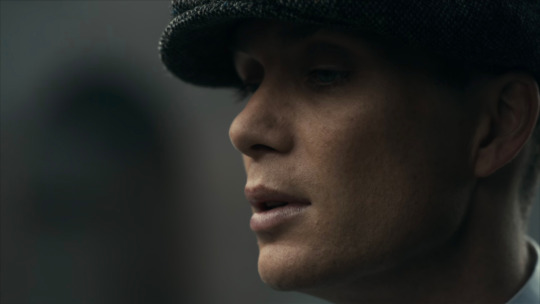








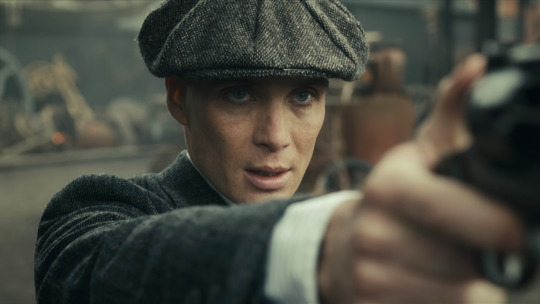

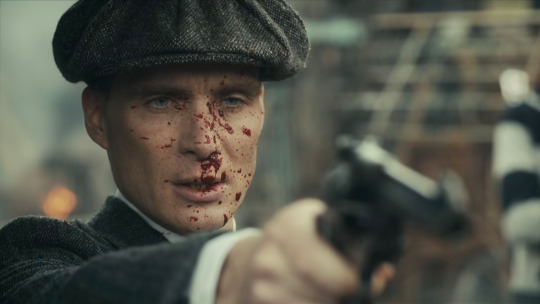
Peaky Blinders, Season 1 Episode 1
#peaky blinders#Otto Bathurst#Cillian Murphy#Steven Knight#Paul Anderson#Samuel Edward-Cook#Sophie Rundle#Ned Dennehy#Iddo Goldberg#Annabelle Wallis#Joey Chan
62 notes
·
View notes
Text
Pride all year

Robeccax Venus: Monster High: Didn't get a comic but they're a great ship.
Annabel Lee& Lenore: Nevermore Webtoon: AB would offer to murder to prove her love, Lenore really doesn't want or need that.
Ballister+ Ambrosius: Nimona: What I would give to see/hear them in a romantic animted duet.
Dr. Venomous+ Lord Boxman: OK-KO: They are canonically married, and just adore each other so sweetly.
Hera+ Echo: Lore Olympus: I imagine so many side comics of them having grand, sarcastic adventures.
Micky+ Cordelia: Th Micky Knight Mysteries: A very queer book series I like that more people should look into!!!
#monster high#lore olympus#hera#echo#the micky knight series#robecca steam#venus mcflytrap#lord boxman#ok ko let's be heroes#dr venomous#nimona#ballister x ambrosius#annabel lee whitlock#lenore vandernacht#annabel lee x lenore#nevermre webcomic#nevermore webtoo#6 lgbtq ships
21 notes
·
View notes
Text






2025 WOMEN'S ASHES AS TEXT POSTS
#please know i'm not trying to make fun of heather or the team that storm was just some cosmic tragedy shit#annabel sutherland#amy jones#grace harris#heather knight#beth mooney#georgia voll#lauren bell#lauren filer#my gifs#cricket australia#england cricket#y'all mind if i add directors commentary to these gifs? i was trying to evoke a dead wife montage vibe for bellsy#both amy *and* grace are too whimsical and joyous. vollys just trying to get a rise out of moons#the final ~40 minutes of the test match was such an awful time to watch i think its the best cricket i've ever seen in my life#as text posts
16 notes
·
View notes
Text
'Before his life-changing call from director Christopher Nolan, his sensational performance as the father of the atomic bomb in Oppenheimer, and the well-deserved Oscars buzz following the film’s release, Cillian Murphy spent nearly a decade portraying working-class Brummie gangster Tommy Shelby in Steven Knight’s British crime drama, Peaky Blinders.
Inspired by the real-life gang of the same name, the six-season series followed the Shelby family’s business dealings, relationships, unsavory acts, and pursuits of power in Birmingham, England, 1919. Thanks to compelling writing, word of mouth, a Netflix streaming slot, and standout performances from a stacked cast — especially Murphy’s — what started as a small show on BBC Two in 2013 grew into a global phenomenon.
Oppenheimer’s immense scale and widespread acclaim may have solidified Murphy as a household name, but in the years leading up to the monumental project, Peaky Blinders allowed him to meticulously refine his craft, wholly inhabit a character, and take his acting prowess to the next level. A decade after the riveting series premiered, Tommy Shelby remains one of the actor’s most indelible roles — a truth even more impressive when you learn that Murphy wasn’t Knight’s first choice for the Peaky protagonist.
That’s right. The 47-year-old Irish actor nearly lost the role of Tommy Shelby to Jason Statham, but a text sent to Knight post-audition, which read, “Remember, I’m an actor,” changed everything. Ahead of Peaky Blinders’ final season, Knight told Esquire he “never forgot” Murphy’s show of confidence. Despite the clear departure from his appearance and past roles, the actor was sure he could embody the physically imposing, virile gang leader. And he was right. “It’s a cliché, but no one else could have been Tommy Shelby,” Knight admitted later in the interview. “It would be absurd. It was as if Cillian was always waiting.”
Since Murphy first rode through the gritty Birmingham streets on horseback sporting a fresh undercut and a razor-trimmed cap pulled over his eyes, the role felt as bespoke as one of Tommy’s signature three-piece suits. On the surface, Murphy nailed the Birmingham accent, convincingly knocked back lowball glasses of whiskey, confidently handled a gun, and seductively smoked thousands of cigarettes on set. But his abilities to access and expose the deeper complexities, contradictions, and PTSD of the broken World War I veteran were particularly profound.
As the leader of the tight-knit Shelby clan, Tommy was a commanding, ambitious, fiercely intelligent force; an enigma who routinely committed despicable acts, but possessed enough potential for good that he repeatedly gained empathy from viewers — with help from Murphy’s charisma and authentically pained portrayal. Haunted by flashbacks of France and fueled by booze for a majority of the series, the Peaky Blinders leader perpetually grappled with a restless mind and stained soul, while guarding a heart capable of immense love. He was, all at once, completely unafraid of his own death and terrified of losing others. And since business was always personal, his family became his greatest strength and most sizable weakness.
A fraternal feeling and the sheer weight of familial responsibility shone strongest in scenes with Paul Anderson’s Arthur, while Tommy’s intimate relationship with Helen McCrory’s Aunt Polly — which deepened and shifted on the daily — peeled back his layers and offered glimpses of vulnerabilities. Tommy’s shell was undeniably softest with Grace (Annabelle Wallis), the woman who made a tea drinker, father, and eventual fortress out of him. Through small talk and genuinely sexy sex scenes, heart-to-hearts and heartbreak, and the brutal gut-punch of unexpected mourning, Murphy tapped into the full range of human emotions to convey and process the love and loss of Tommy’s wife. He never fully recovered from her death, but devastating breakdowns after the loss of Polly and his daughter Ruby proved he was still able to feel.
Murphy effortlessly exuded swagger, showed subtle humor in moments like the famous “no fucking fighting” scene, and slipped into pure panic at the drop of a hat. He loudly expressed grief in palpable scenes, such as Tommy’s brush with death in the Season 2 finale — when he almost had (and lost) “fucking everything” — or the bone-chilling final seconds of Season 5, when he hopelessly held a gun to his head, emitting a guttural scream born from insufferable trauma and fury. But despite the grand outbursts, so much of Tommy’s emotions were expressed without words; through Murphy’s facial expressions, jaw clenches, silent spirals, and intense gazes from his deep-set ice-blue portals.
Whether Tommy was strutting through smoky streets in solitude, leading grand shootouts with adversaries like Luca Changretta (Adrien Brody), digesting Alfie Solomons’ (Tom Hardy) verbal acrobatics, recovering from ruthless beatings, chomping on a leaf with his toddler, or battling his inner demons, Murphy’s performance was mesmerizing. Over the course of Peaky Blinders’ run, the actor brilliantly resided in the middle-ground between hero and villain, light and dark, and savior and sinner. And without fail, he flawlessly found his way back under the multi-faceted character’s skin after substantial filming gaps and major projects like Dunkirk and A Quiet Place Part II. In the 36 hours we got to spend with him on-screen, Murphy delivered a career-great performance, crafting an incredibly lived-in character, while masterfully evolving alongside him.
A decade after Peaky Blinders first premiered, it remains a razor-sharp series that boasts Knight’s brilliant storytelling; captivating characters; stunning set design, wardrobes, and haircuts; a killer soundtrack led by Nick Cave and the Bad Seeds’ “Red Right Hand”; and a cast that was firing on all cylinders. The series’ legacy is as strong as the Shelby family in their prime, and when the credits roll on the dark final season — one made considerably more challenging by COVID-19 and the real-life death and mourning of McCrory — you’re reminded again that no one else could have been Tommy Shelby; that Cillian Murphy, as promised in his post-audition text, is one hell of an actor.'
#“Red Right Hand”#Nick Cave#Cillian Murphy#Christopher Nolan#Steven Knight#Peaky Blinders#Dunkirk#A Quiet Place Part II#Annabelle Wallis#Helen McCrory#Tommy Shelby#BBC Two#Jason Statham#Aunt Polly#Grace#Luca Changretta#Alfie Solomons#Tom Hardy#Paul Anderson#Arthur
63 notes
·
View notes
Text
R.I.P. Annabelle Cane and Hezekiah Wakely.
You both would have loved Hollow Knight's Deepnest. :(((
#I'm playing Hollow Knight for the first time and absolutely loving it#some boss battles piss me off but overall i love the game#also unpopular opinion: i find royal waterways a lot scarier then deepnest. the flukes and noises creep me out way more then the spiders#although i haven't finished deepnest yet so I'm ready to eat those words#tma#the magnus archives#hezekiah wakely#annabelle cane#hollow knight#hk#deepnest
12 notes
·
View notes
Text
The reason, according to Steven Knight, of Grace's fate.
It is part of a note:
Knight also referenced his relationship in the Esquire interview, telling fans why Grace had to be killed off.
He said: “It was tempting to give him that sort of happiness with Grace.
“But I just think if he ever finds happiness and contentment then the thing that makes him extraordinary will probably go away.”
Do you all believe this? His depression is what makes him extraordinary? I liked him better in S1 and S2, by S6 he was soo depressed.






#tommy x grace#tommy shelby#grace shelby#grace burgess#cillian murphy#annabelle wallis#thomas shelby#tommy x grace forever#tommy and grace#peaky blinders#steven knight
17 notes
·
View notes
Text






UPDATE: Fixed Reuben's pants as they looked like tubes filled with air rather than fabric. Also while I did this I realized I fucked up, and never actually saved Lionel's coat look somehow? So I had to just take it from the OG family lineup and post it as a separate piece, and his hair now looks brighter in color in it as a result.....
How the fucknuggets did I not save when I adjusted his outfit to create the coat????????
----------
I initially meant to make alternate outfits/outfit additions for Reuben and Annabelle as well, but this has taken me 3 days already, and I'm kinda done with it lmao, I can add those later. Azul's family. (Annabelle belongs to @mad-hatter-rici)
Also, fun facts about the family below:
Lionel's style is often goth-adjacent, even if he rarely wears pure black. He also typically carries a journal with him, where he tends to write down his thoughts, usually not related to his job of course, given patient confidentiality.
Lionel tends to hide away his tail and ears when at work, as they can be distracting to some patients and the tail can get in the way
Lionel is the family doctor for one of the story protagonists, Avane Faydream and her family.
Reuben wears a lot of colorful patterned clothing, his style is generally very colorful, boho-inspired vibe.
Reuben's mage form looks similar to Azul's purple undercoat in his mage outfit, only Reuben's is red since he's a fire elemental mage.
Reuben was always closer with Adam, namely because Azul kinda suck at handling kids. (He still loves his baby brother, even if he was/is awkward around him)
Adam often jokes that he was born from an egg, since his mama is a songbird. Had he been born as one, he indeed would've been born from an egg, rather than the mammal birth from a womb.
Adam loves wearing colorful outfits, typically brighter pastels.
Adam can in fact sign as beautifully as his mother, even if he can't do the more destructive side of her voice. They sometimes burst into a duet randomly, much to Lionel's amusement, Reuben's delight, and Azul's fond annoyance.
Annabelle is friends with the grandmother of the protagonist family of this story, Yui Araknos. Yui calls her "funny birdlady" sometimes, jokingly.
Annabelle gave birth to Adam much later from his adoptive brother's arrival, because as much as she loved kids and wanted to have them, she was apprehensive about all the possible birth complications and a little afraid of pregnancy at the time. It was only after her adoptive boys were starting to leave the nest so to speak, that she started to warm up to the idea. (Lionel was always supportive of her, whatever she wished to do)
Annabelle calls her husband "Aster," Adam her "kitten", Reuben is "Robin", and Azul is "Bluebird."
#artists on tumblr#oc illustration#oc reference#chesire cat#songbird#digital art#lumi's art scribbles#lumi's chaotic creations#Night city parlor#Knight family#Reuben Samaros#Reuben Knight#Lionel Knight#Adam Knight#Annabelle Knight#my oc#friend's oc#The mage and the mobster#Starknight
7 notes
·
View notes
Text
OC Character Profile: Sean Landers

Summary: Resident genius, prodigy, and all around good guy.
Author's note: When I created Annabelle, I knew I wanted her to have a partner in crime, and I wanted the relationship to be completely platonic. Sean is her best friend, her (unofficial) brother, and a man she can trust absolutely. Character profile subject to updates.
Appearance:
White Italian male.
Time travel has slowed their aging process, and age depends on where you are in their timeline.
Thick blonde curls, piercing sapphire blue eyes.
Classically handsome, strong build, 6’2”.
Character references: Chris O'Donnell, Henry Cavill, Jake McCarthy (Witchbblade Comics)

Family:
Father: Joseph (Joe) Landers, deceased.
Mother: Helena Esposito Landers, alive, single.
Brother: Michael Aaron Landers, deceased.
Large Italian family on his mother's side. Tons of aunts. Tons.
Single, and hesitant to change that.
Views Annabelle as a sister.
Education:
Attended the same school as Annabelle. Met Annabelle as a student teacher in one of her classes.
Intense study habits, genius IQ, multiple degrees.
Degrees in Physics, History, and Applied Mathematics.
Tech savvy, but prefers to work with his hands.
Fluent in English, Italian, and a bit of French, Spanish, and German.

Additional details:
Fears: becoming his father, hurting his mother, or any other woman or child.
Motivations: obsessed with changing the past, saving his brother.
Physical abilities: fully capable of defending himself, but hesitant to fight back because of his father’s violent and abusive behavior. He's quick to protect others, though.
Deeply protective of women and children.
Goals: to do the right thing, to get Annabelle home, to see his mother again.
Preferred weapon: Intellect, brawler, battle ax, crossbow.
Otherworldly abilities: That would be telling. 😏
Loves to play chess, ballroom dance, sing karaoke, and do math.
Learned to ballroom dance at one of his aunt's dancing studios.
Learned how to cut hair from one of his aunt's salons.
Pairings:
(This is not an all inclusive list.)
Donatello (TMNT) - platonic
Red/ Ruby (OUAT) - romantic
Urs (Forever Knight) - romantic
The Lone Gunmen (X-Files) - platonic

#my ocs#sean landers#annabelle harris#character profile#somethin bad#time travel#late night conversations#suspended in time series#suspended in time#tmnt#ouat#forever knight#xfiles#am writing#my oc stuff#oc masterlist#fanfic masterlist
2 notes
·
View notes
Text
u only get 30 tags. these are just my favorites.
Hello, tumblr user. Before you is a tumblr post asking you to name a female fictional character. You have unlimited time to tag a female character, NOT a male one.
Begin.
#queen toothiana/tooth (rotg)#merida (brave)#tara (love n deepspace)#simone (love n deepspace)#nepheli loux#eleonora violet bloody finger#needle knight leda#annalaise (bloodborne)#viola (bloodborne)#kos (bloodborne) cos why not lmao#ranni the witch#irina (elden ring)#eileen the crow#chell portal#the merchant (dredge)#the researcher (dredge)#the shipwright (dredge)#katherine (we were here)#es (alter ego)#sasha james (tma)#naomi herne (tma)#alice dyer (tmagp)#gwen bouchard (tmagp)#helen richardson (tma)#annabelle cane (tma)#hinata (naruto)#kushina (naruto)#six (little nightmares)#wen qing (the untamed)#undyne (undertale)
69K notes
·
View notes